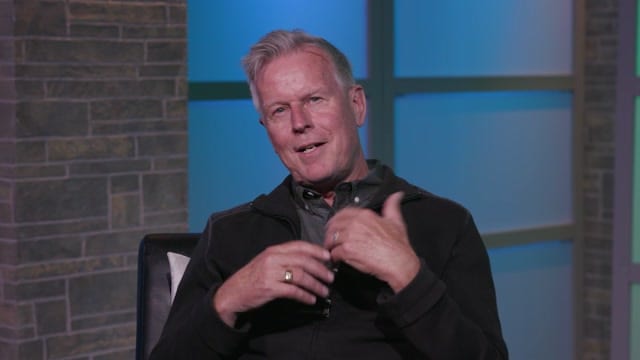
Monty Kelso discusses which questions work really well in interviews, and why.

Monty Kelso discusses which questions work really well in interviews, and why.
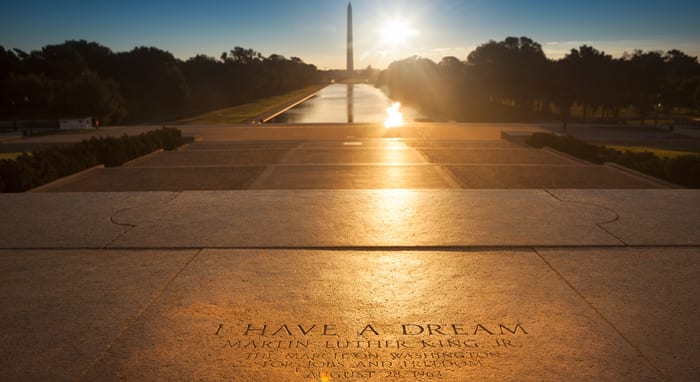
To honor the legacy of Dr. Martin Luther King Jr., The Global Leadership Summit is sharing a powerful 7-minute video from The Equal Justice Initiative (EJI) founded by GLS faculty alumnus Bryan Stevenson.
https://www.youtube.com/watch?v=-HHY_4f5nds?rel=0
On April 26, 2018, under the leadership of Bryan Stevenson, EJI opened the nation’s first memorial, The National Memorial for Peace and Justice, dedicated to the legacy of enslaved black people—people terrorized by lynching and African Americans humiliated by racial segregation and Jim Crow laws.
The short film Abbeville provides insight into the history of lynching in the United States, the deep pain that remains among families of victims and how communities, like Abbeville, South Carolina, are coming together to remember their loved ones and heal.
A century ago, a white mob beat, stabbed, shot and hung Mr. Crawford, a 56-year-old black farmer, in the Abbeville, South Carolina town square, after he dared to argue with a white merchant over the price of cottonseed. The patriarch of a large, multi-generational family, and the owner of 427 acres of land, Mr. Crawford was a successful farmer and leader whose murder had long-reaching effects.
The gruesome public murder, though committed openly, did not lead to prosecution or conviction for any members of the mob. Days after the lynching, Abbeville’s white residents “voted” to expel the Crawford family from the area and seize their property. When South Carolina’s governor declared himself powerless to protect the family from violence, most of the surviving relatives fled to destinations as distant as New York and Illinois, fragmenting the once strong and close-knit family.
It would take ongoing efforts over generations to begin to repair and reconnect those bonds through family reunions and the persistence of family elders who ensured that the younger generations saw Grandpa Crawford’s photograph at family gatherings and knew the story of both his life and death.
The short film documents and honors the Crawford family’s determination to tell their story.
“For a long time, the earth has been silent about the injury and injustice of what happened to Anthony Crawford,” said EJI Director Bryan Stevenson, who officiated the unveiling. “But today, we’re going to resurrect that truth.” As the marker was revealed, the crowd chanted, “We are here!”
To watch Abbeville is to witness the power of truth-telling to pave the way toward healing and reconciliation for individuals, families, communities, and EJI believes, our entire country. By erecting permanent markers that memorialize victims of lynching, EJI is working with communities to change the American landscape to tell a more complete and honest story about our history.
The Equal Justice Initiative is committed to ending mass incarceration and excessive punishment in the United States, to challenging racial and economic injustice, and to protecting basic human rights for the most vulnerable people in American society.
To learn more, check out eji.org or Just Mercy: A Story of Justice and Redemption, the New York Times best-selling book by Bryan Stevenson.
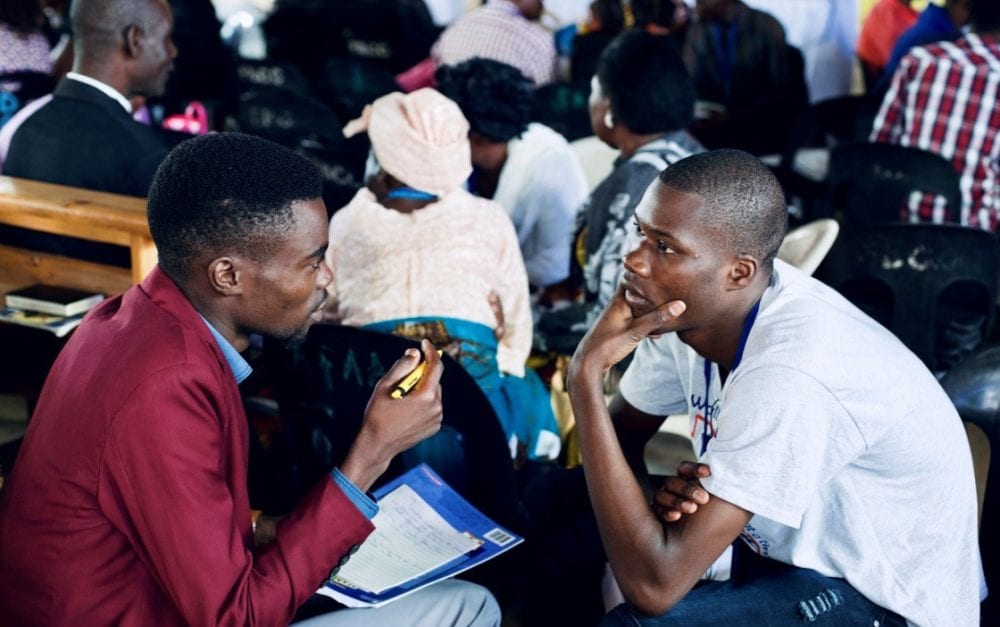
“Together, let’s take back George. Don’t run away from it. Fight for it! Let’s redefine our name. We are from George, and we are responsible for what goes on in this community. You can’t afford to leave this building and bury what you have learned.
What are you going to do with the knowledge you have acquired? How are you going to lead? How are you going to address illiteracy, bad sanitation and alcoholism in this community?
We are from George, and we are responsible for what goes on in this community
As a network, we are committed to George and its transformation. Will you join us?”
These were the words of fired-up Pastor Brighton Siyanyinzya as he closed the first Global Leadership Summit event in George Community, Lusaka in November 2018.
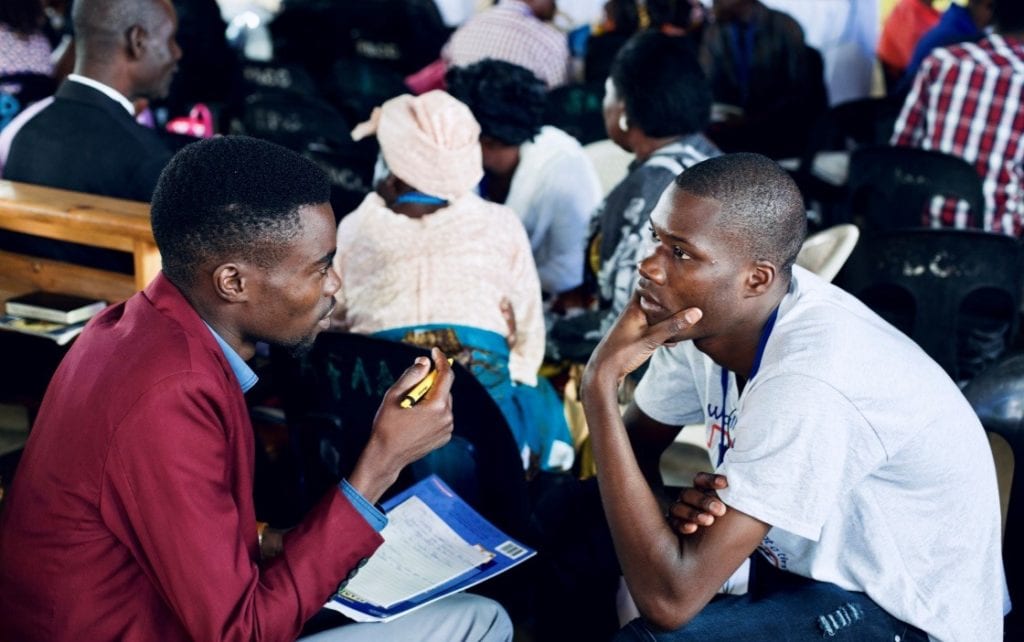 The root of most of the issues is substandard leadership. Jubilee Centre had been sponsoring a network of pastors to attend the Summit at a church in the suburbs of Lusaka, but it became clear that many more leaders in George were desperate for leadership development of this caliber. So in 2018, we decided to launch it locally in George.
The root of most of the issues is substandard leadership. Jubilee Centre had been sponsoring a network of pastors to attend the Summit at a church in the suburbs of Lusaka, but it became clear that many more leaders in George were desperate for leadership development of this caliber. So in 2018, we decided to launch it locally in George.
Approximately 330 leaders showed up for the first event. They were inspired, motivated and challenged to start change within themselves before attempting to change their community. This changed the trajectory of the Summit, especially on the second day; leaders were being pushed to a place of vulnerability, something uncommon in our Zambian culture.
These are but a few stories of leaders who have been pushed in ways they didn’t think were possible. They understand how imperative good leadership is and this was confirmed by how much they gave to the Global Leadership Fund during our time of offering.
Tony, a young legal assistant, was deeply provoked by Sheila Heen’s Difficult Conversations session.
Due to his background in law, he used to bulldoze through conversations and discussions with his peers without any regard for their perspective or feelings. He was “always right,” he said, “I feel terrible about what my pride has done to my relationships. I want to mend my broken friendships. Going forward, I will be intentional about being an avid listener.”
Moses, a teacher, was swept away by Erwin McManus’ fearless lifestyle.
He said, “I have been riddled with financial fear for as long as I can remember; living in George can do that to you. However, Erwin’s message has rebuked these fears and I know that if Erwin can overcome the fear of death, I can put my financial insecurities aside and pursue God’s purpose for my life.”
Rebecca, an elementary school teacher, learned about listening to her inner voice.
She said, “Patience has always been a struggle for me. I didn’t know how to express my ideas with my friends. I would usually leave conversations midway through. I have learned the importance of listening to my inner voice and having the patience to arrange my thoughts and respond with grace.”
Each of their faces communicated to me that they wanted, more than anything, for other leaders around the globe to have access to this information. Their selflessness was the biggest blessing to me because this is one of the poorest communities in Lusaka, but they sacrificed the little they had to give because they have bought into the vision of The Global Leadership Summit. This brought me joy and fulfillment and gave me hope for the future of this community.
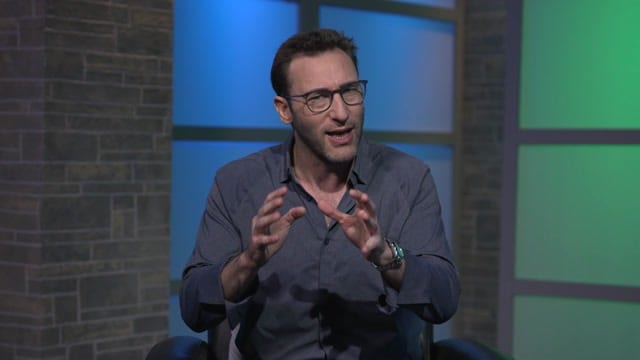
Simon Sinek coaches leaders on the best process for discovering your Why.

This article is co-written by Adam Grant (GLS 2015) and Erin Henkel, portfolio director at IDEO’s Chicago studio.
We all know how important it is for an organization’s leaders and employees to empathize with its customers. Evidence shows that when people understand and care about those they serve, they solve problems more creatively and provide better service.
What’s the best way to cultivate empathy?
The standard answer is to spend more time with customers. For example, leaders at IBM, Medtronic, and Microsoft have sent their people out to meet customers and see their products in use. But recently at IDEO, we’ve been encouraging companies to go a step further. Instead of just getting to know the customer, we want employees to become the customer.
The idea is to create an embodied experience for employees, rather than just a conversation. People learn much more when they are physically engaged in an activity, not just talking about it. But you can’t just take employees through the actual customer experience. They already know it like the back of their hands; it’s too easy for them to get defensive and justify the way they already do things.
Instead, we bring people into different contexts—removed from typical day-to-day company operations—that can serve as a metaphor for what customers experience and therefore jolt employees into a more empathetic stance.
Take our work with Consumers Energy in Michigan. The company had noticed that low-income customers weren’t paying utility bills—even in the middle of the frigid Midwest winter. When they asked us to help them figure out why, we spent time with Consumers Energy users in Flint and quickly saw that the billing process was too opaque, with too many unexpected charges. We could have simply reported this to the company’s executive team or brought them in to have the same discussions we’d had. But we decided our message would have more impact if we gave them a taste of the customer experience.
When they arrived for one milestone meeting, we greeted them in the lobby, gave each person a handful of Goldfish crackers and told them to make a simple choice: either take the stairs or the elevator to the seventh floor. Those who rode the elevator were charged three goldfish at the top, while those who took the stairs didn’t have to pay anything. Throughout the day, we laid on more choices with unexpected “charges.” By lunch time, one team member didn’t have enough Goldfish to “pay” for his food. And when we charged people to pay to sit down at a meeting, another team member had to borrow Goldfish to get a chair.
At the end of the day, the group had a richer understanding of how difficult it would be for people with limited resources to maneuver through their system. This empathy experience galvanized them to create an innovative pilot billing program called Clear Control, which features bi-weekly billing periods, daily text updates on usage and bill amounts, and personalized home audits for efficiency.
Another example comes from Carnival Cruise Line. The company wanted to reimagine its vacation planning and booking process, which had been especially painful for rookie cruise-goers and those managing group reservations. To bring to life the guest’s perspective on the problem, we brainstormed stories where we saw similar challenges and landed on a familiar but challenging journey with a group of characters, conflicts and confusing rules: The Wizard of Oz. If her dream destination is to get home to Kansas, then Dorothy has to book it like a cruise.
We created a game with another token-based payment system, and employee characters as Dorothy had to advance through four stations aligned with stages of the Carnival booking process. About two dozen sales and service agents, managers and execs participated—alternately laughing or complaining, shouting with impatience or cheering in victory. As in all our empathy exercises, we ended with a team debriefing. The team sat in a circle and talked about what had been fun and what had been frustrating. We then dove deeper into a discussion around the roles, rules, similarities to their work, and what they wanted to do to improve the guest experience. Doing this with cross-functional groups across different levels in the organization makes it easier for everyone to speak up, spot opportunities and make collective change across silos.
Carnival has since piloted a new team-based call center structure to create a more unified experience for guests and invested in a new digital dashboard for agents, which visually tracks each customer’s journey. Early signs have been positive, with increases in sales conversion and first call resolution.
It takes time and energy to design these experiences, and they can be messy in practice. But we’ve found them to be a powerful way to ensure that the people in your organization truly understand their customers.
Here’s how to do it.
What is broken, frustrating, surprising or uncomfortable for your customer?
What industry, experience or story has similar themes and problems? Generate a range of options and pick the one that resonates.
Make, build, simulate, act out and play through the overlapping moments of your real business problem and the analogous experience that you have identified. What is the minimum viable experience that connects the two for people? Design that.
Usually, the actual experience is no more than an hour or two—that’s long enough for people to go through a wide range of emotions—and then we leave at least half an hour to unpack how people felt and what they noticed. The goal is for everyone to walk away with new ideas and discrete actions to take, and a plan for communicating their insights to the rest of the organization.
It’s often said that necessity is the mother of invention. Sometimes we generate ideas to address our own needs. But in many cases, it’s the necessity of others that drives us to innovate. Empathy isn’t optional in problem-solving. It can drive creative breakthroughs.
This article originally appeared on The Harvard Business Review.

I’ve started churches, served more established congregations, and been the vice president of a half-a-billion-dollar company. Now, I am privileged to lead the Billy Graham Center at Wheaton College.
In my roles, I have seen leaders who overwhelmingly succeed and those who phenomenally fail. One of the key differentiators of success for leaders that I have observed is their ability to create, protect, shape, and embody an appropriate culture that matches the goals and purposes of their organization.
In the discussion about culture, it is easy to make broad, sweeping statements about the need to shape culture. But good leaders go awry when they try to shape the culture into one they personally enjoy instead of the culture that is appropriate for their context.
Leaders must be adaptable and intuitive enough to know the right culture to shape in the right places and the right times in an organization’s history.
Every leader will naturally embody the things he or she believes and the values she or he cares about. And that is good and should be cultivated. But in the nuance of a specific role or a specific place, leaders must be adaptable and intuitive enough to know the right culture to shape in the right places and the right times in an organization’s history.
Where some good culture-shapers stall is forgetting the value of place.
Location and context matter immensely when shaping culture, and I’ve often seen the dichotomy of a good leader shaping unhealthy cultures in education or church leadership. It frequently comes from successful business leaders who make the switch to nonprofit leadership. They are often hired for their leadership acumen and provide great benefits to spaces where practitioners (educators/professors and pastors/theologians) don’t have direct leadership training and years of experience. This is good for churches and educational institutions alike.
But where these nonprofit leaders often have hang-ups is when they insert a profit-driven culture into a nonprofit environment. The production-driven culture is out of place and out of touch with the moving target goals of nonprofit leadership. Success becomes measured differently, and advancing the institution becomes harder to gauge, which can be problematic for a cut-and-dry culture that is often present in successful businesses.
Good leaders keep the principles of valuing clear goals, streamlining communication, and expecting hard work and production from their employees. But good leaders must understand their landscape and adapt the culture in which those goals are communicated to match the context of an institution or organization. So, the principles can be the same, but they can be packaged with more care and nuance, especially in the switch between for-profit and nonprofit leadership.
The value-set of a leader’s principles is crucial to keep in the contextualization of culture.
For instance, if a leader is known for encouraging on-time and accurate financial reporting, he or she should not compromise on that in a different leadership context, but the mechanisms of how that person accomplishes that (culture) can and should change with the organization with which she or he partners.
Again, where I have seen leaders drift is where they compromise their convictions in order to care for the culture. It is a balance between the two: culture and convictions. Good organizations understand that good leaders bring convictions (and the underlying philosophical principles that underpin them) to the table. But culture is what an organization hires a leader into, and shaping that culture with value-based convictions means that a leader’s methods should adapt while the principles should stay the same.
One of the marks of good leaders is that they instill their convictions in others.
For instance, when I came to the Billy Graham Center in 2016, I valued innovation and organizational flexibility (as I had in my last role). However, I needed to adapt how I communicated those values in our team. I communicated like a vice president of a large company, but I needed to communicate like the leader of a traditional academic institution. So, my convictions and expectations for our team didn’t change, but I changed how I communicated those expectations and matched convictions with the culture that I was responsible for stewarding and advancing.
One of the marks of good leaders is that they instill their convictions in others. However, often where the miss occurs is that they also pass on their preference of culture with those convictions. This where the mentor conflates values and preferences, and those who are being mentored also do the same, rendering them less adaptable when they become leaders themselves.
Leaders who develop others that conflate culture and convictions can set their mentees up for failure when they miss the first point—the value of context. As leaders grow and invest in others, they must learn the nuance of investing their values and principles, while differentiating their preferences and the specific culture of where they are currently leading. When they can do this, they develop more adaptable leaders who can lead outside of a specific cultural context, giving them a foundation of principles instead of a full-built house of principles alongside the constricting walls of preferences.
As we lead, we must learn to differentiate between our convictions and the culture we are current in and shaping. When we do this, we will develop deeper, principled convictions that will allow us to be more adaptable in different cultural contexts and ultimately become better influencers.

In November 2018, The Global Leadership Summit team in Vietnam brought the event to a group of young, emerging leaders for the first Youth GLS event in Hanoi. More than 160 people showed up hungry to learn.
Be encouraged by these incredible stories of resilience and hope.
 I’m a missionary and in charge of seven churches and four detoxification centers. The seven churches have over 300 followers at the moment. Each detox center has about 50 members. I’ve been to The Global Leadership Summit four times and really love it. Being exposed to the GLS is really helpful. It gives me new ways to develop my churches and detoxification centers.
I’m a missionary and in charge of seven churches and four detoxification centers. The seven churches have over 300 followers at the moment. Each detox center has about 50 members. I’ve been to The Global Leadership Summit four times and really love it. Being exposed to the GLS is really helpful. It gives me new ways to develop my churches and detoxification centers.
I’m determined to rescue more and more drug addicts
I’m determined to rescue more and more drug addicts, introduce them to God, and love them as God does with his followers. This year, I loved Gary Haugen’s talk the most. I was moved by his message about fear and how it can kill a leader’s dream. It reminded me that each of us has to face our fear to fulfill our dream. I also bought a CD because I like to listen to the GLS talks again and again because they help me a lot with my leadership. I hope every one of us, as leaders, really love our people and care for them as God does for us.—Nguyen Trong Doan
 I’m a part of a Thai ethnic group in the mountainous region of northern Vietnam. I came to Hanoi to take part in a course helping me escape the addiction of heroine. Thanks to a close friend, I also learned about God for the first time and have been in relationship with Jesus since March 2018. I didn’t have a strong belief in God, but taking a look at others who were in the same situation, I realized that their lives have changed for the better. And the more I read the Bible, the more I realize God’s love for me.
I’m a part of a Thai ethnic group in the mountainous region of northern Vietnam. I came to Hanoi to take part in a course helping me escape the addiction of heroine. Thanks to a close friend, I also learned about God for the first time and have been in relationship with Jesus since March 2018. I didn’t have a strong belief in God, but taking a look at others who were in the same situation, I realized that their lives have changed for the better. And the more I read the Bible, the more I realize God’s love for me.
I’m so blessed to be a part of the GLS for the first time. Gary Haugen’s talk about overcoming fear touched my heart most. It demonstrates exactly what I’ve experienced. I got hooked on drugs because of my curiosity. My ego was very big. I knew what I was doing was wrong—not just for me, but also my wife and daughter. But I couldn’t stop. When I’d come home, I would shout to others first to avoid the complaints. It was my way to hide my fear. But today, the message of Gary Haugen urged me to take action to change my behavior. From now on, I will try to confess my mistakes whenever I do something wrong. I would like to make my family happy and help other addicted people in the future.
Thank you for bringing such a useful program like this to Vietnam
My daughter calls me to encourage me to finish my course to end my addiction. I have 10 months left. I can’t wait until that day. I plan to come back to my hometown and join a church so that I can be close to my family again. Thank you for the GLS. Thank you for bringing such a useful program like this to Vietnam.—Lo Van Vinh
 The feeling of happiness and excitement surged inside me when I saw hundreds of God’s faithful leaders gather in order to learn and grow at The Global Leadership Summit in Vietnam this year. The talks left a deep mark on me. I realized, even when we hit rock bottom, never will God give up on us or abandon us.
The feeling of happiness and excitement surged inside me when I saw hundreds of God’s faithful leaders gather in order to learn and grow at The Global Leadership Summit in Vietnam this year. The talks left a deep mark on me. I realized, even when we hit rock bottom, never will God give up on us or abandon us.
You see, three years ago, I got into an accident that severely damaged my right hand. I felt completely hopeless. My life might have been miserable had I not met and followed God. In 2016, I started to study at Bible school. I couldn’t write with my right hand, so I decided to try to write with my left hand. After a year, I got really good! At the Summit, I was inspired to be more sympathetic to others who face physical challenges. I can put myself in their shoes. I also hope to become a person who will spread God’s love to thousands of people.—Nguyen Thi Thong
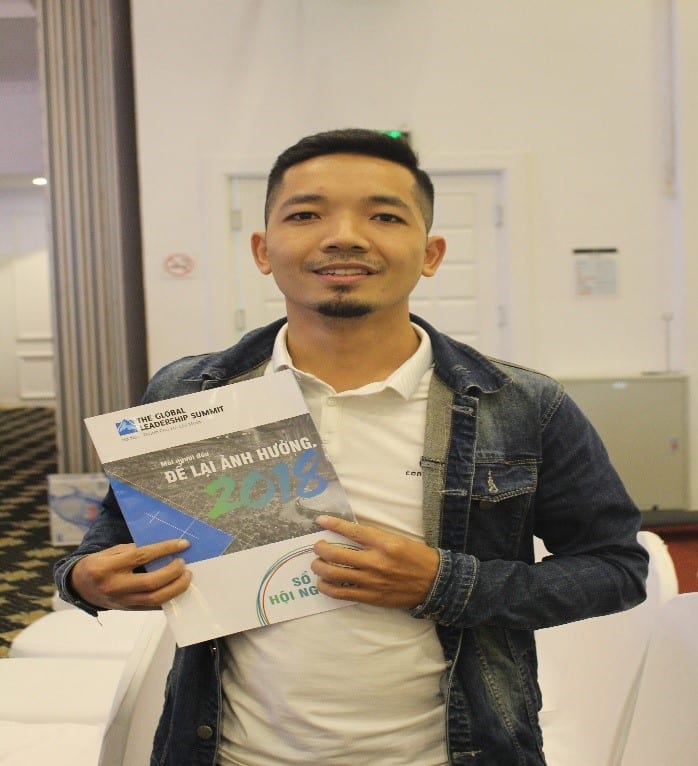 I didn’t believe in the existence of God. Years ago, I had started learning about how to be a psychic, but deep down, I didn’t feel what I was doing was right, so I quit. When I was traveling back to my hometown, I met up with my cousin who told me about God. I wasn’t convinced at first, but my life became full of color when I realized the miracle of God was indeed real. I became a loyal servant to the creator of the world.
I didn’t believe in the existence of God. Years ago, I had started learning about how to be a psychic, but deep down, I didn’t feel what I was doing was right, so I quit. When I was traveling back to my hometown, I met up with my cousin who told me about God. I wasn’t convinced at first, but my life became full of color when I realized the miracle of God was indeed real. I became a loyal servant to the creator of the world.
Today, I’m a member of a local church where I lead youth to Christ. I’ve been serving God now for 15 years. Coming to the GLS, I’m excited! These messages are such a benefit to everyone here. I personally was most inspired by Fredrik Haren’s talk on creative leadership in a rapidly changing world. I’m someone who can’t sit still at all. I’m always looking for new methods and creative ways to do my job more efficiently. There’s a hunger for knowledge in the eyes of the people who attend the Summit, and they all want to develop their creativity. For me, I want to create a place that honors God, and I have a dream of building a model for a friendly atmosphere for worshiping God. My dream would be to multiply the model everywhere.—Nguyen Duy Tuan
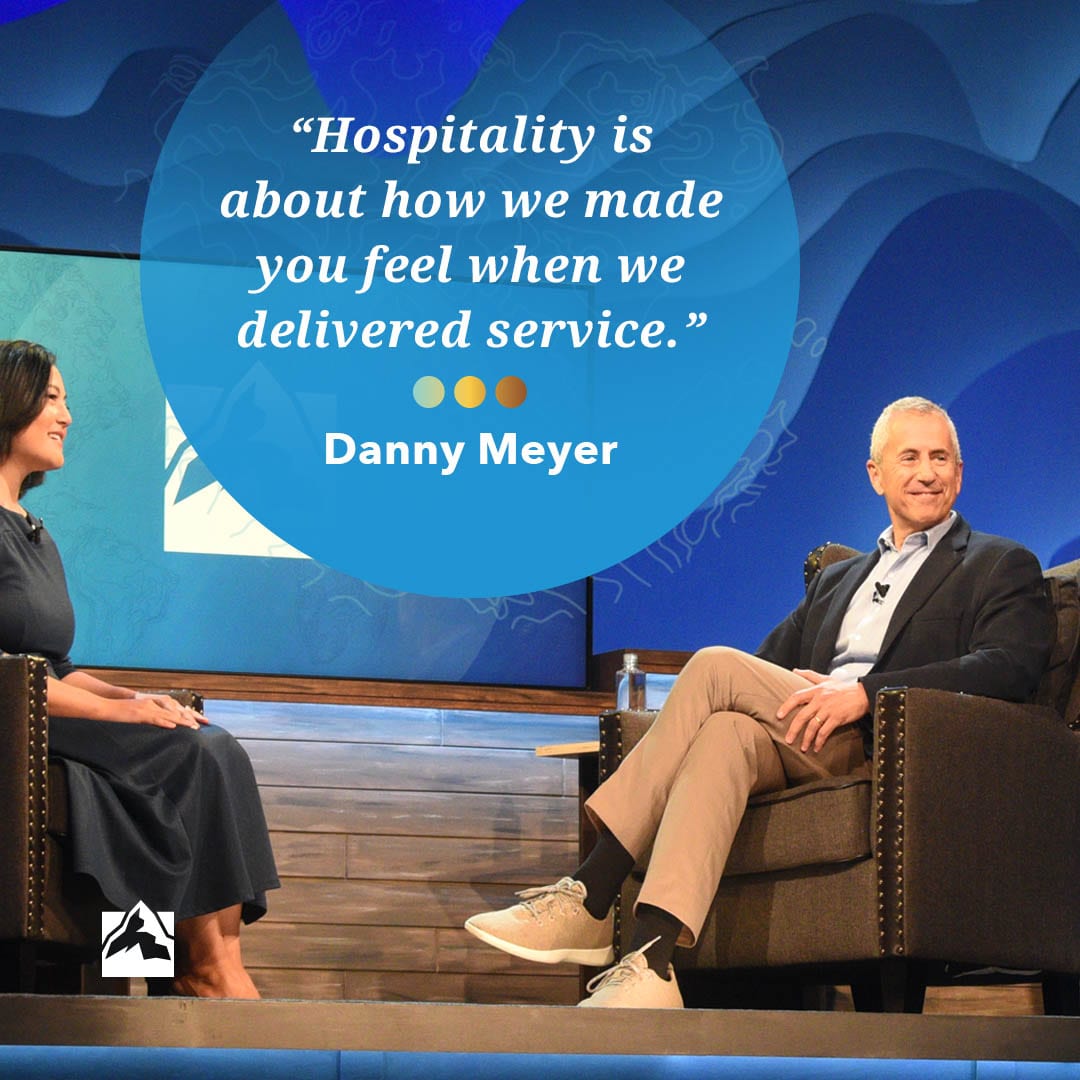
Hospitality is about how we made you feel when we delivered service.
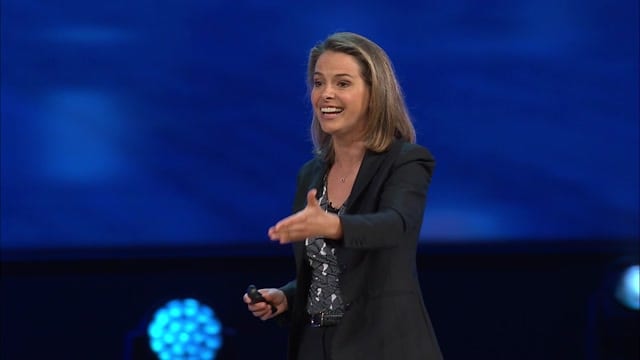
Erin Meyer describes cultural differences around the role of silence in communication.

Every Tuesday and Thursday morning at 8:30 am CST, our staff gathers together to pray for our partners across the globe.
Please join us in prayer as we lift up the international Summit events happening this weekend. Pray for God’s anointing on every detail and that those who attend would leave feeling equipped, inspired and encouraged to lead the change they long for in their communities.
And if you have a prayer request, please share it with us. We would be honored to pray with you!
Dhangadi, Nepal
Hualien, Taiwan
Torshavn, Faroe Islands
Belagaavi, India
Only 2.3 percent of the 1.3 billion people who live in India are Christian—at least according to government records. Off the record, the number is closer to four percent, or 50 million. Despite stories of persecution, God continues to move in fresh and unique ways in the country, with churches continuing to grow, the planting of new churches, and new pastors coming into the ministry. Pray that we can raise up leaders who will represent Jesus to India.
Belmopan, Belize
Rivas, Nicaragua
My grander vision is for every Nicaraguan to have a personal relationship with Jesus. At the end of the day, we can be the second poorest country in the Western Hemisphere, but we really want to bring Jesus to Nicaragua so the people can know there is hope—eternal hope.
Los Mochis, Mexico
Hubbali, India
Nagpur, India
The majority of Christians in Nagpur are first-generation believers who only speak the Hindi language. In a city like Nagpur, where Christian leadership resources are limited, especially for Hindi speakers, the GLS is an incredible blessing, and an answer to prayer.
Reykjavik, Iceland
“We welcome and encourage comments on this site. There may be some instances where comments will need to be edited or removed, such as:
If you have any questions on the commenting policy, please let us know at heretoserve@globalleadership.org”
Recent Comments